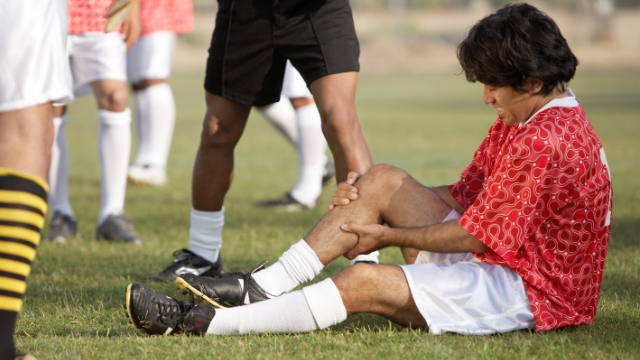Health Blog: Solutions & Wellness Tips
Teens Dealing With Knee Pain And How Physical Therapy Can Help

What is Osgood–Schlatter Disease?
Osgood–Schlatter Disease (OSD) is a common condition affecting the knees of growing adolescents, particularly those engaged in sports or physical activities. It manifests as pain, swelling, and tenderness below the kneecap at the top of the shinbone. This occurs due to the stress placed on the growth plate in the knee during rapid growth spurts, often exacerbated by repetitive jumping and running.
Who is at Risk?
While OSD can affect any adolescent, it is more prevalent among those who are actively involved in sports like soccer, basketball, and gymnastics. Both boys and girls are susceptible, although the condition tends to occur at different ages due to the timing of growth spurts—usually between 12–14 for boys and 8–12 for girls.
How is it Managed?
Medical Treatment
Initial treatment often involves the R.I.C.E. protocol—Rest, Ice, Compression, and Elevation. Over–the–counter pain relievers like ibuprofen may also be recommended for symptom relief.
Role of Physical Therapy
Comprehensive Assessment
A physical therapist starts by conducting a thorough evaluation of your child's knee condition, including range of motion, strength, and functional limitations. This assessment forms the basis for a personalized treatment plan.
Tailored Exercise Programs
Physical therapists design exercise programs specifically tailored to your child's needs. These may include:
- Isometric Exercises: To improve muscle strength without joint movement, thereby reducing stress on the knee.
- Stretching Exercises: To improve flexibility in the quadriceps and hamstrings, which can relieve tension and pain.
- Balance and Proprioception Exercises: To improve joint awareness and control, reducing the risk of further injury.
Pain Management Techniques
Beyond exercises, physical therapists may employ various pain management techniques such as:
- Shockwave, Ultrasound, or Other Passive Modalities for Pain Relief and Healing:
- Electrical Stimulation: Uses electrical currents to activate muscles, which can help in pain relief and muscle strengthening.
Gait and Posture Analysis
Improper gait, running techniques, and poor posture can exacerbate OSD symptoms. A physical therapist can analyze and correct these aspects to minimize stress on the knee joint.
Education and Prevention
Physical therapists educate both parents and athletes on how to manage symptoms at home and how to prevent future occurrences through proper warm–up, stretching, and strength training routines.
Take Action Now
If your teen athlete is experiencing persistent knee pain, don't wait for the condition to worsen. Consult a physical therapist for a comprehensive evaluation and treatment plan tailored to your child's specific needs.
For More Information And To Schedule An Appointment, Contact Us Today. Your Child's Well–Being Is Our Top Priority.
October 25, 2023
Back to Health BlogRECENT POSTS
- Got Heel Pain? New Study Reveals How to Outsmart Plantar Fasciitis
- How Physical Therapy Can Tame Whiplash-Related Symptoms
- Exercise Therapy May Provide Relief for Chemotherapy-Related Issues
- Unlocking Relief From Elbow Pain With Hands-On Therapy and Exercise
- Are Deep Squats Really as Bad as We Think?
- Reclaiming Your Grip: The Power of Hands-On Therapy for Tennis Elbow
- Runners Can Overcome a Common Knee Condition With Physical Therapy
- How Physical Therapy Can Help Older Adults Stay on Their Feet
- What You Need to Know About Alcohol and Heart Health
- Exercise Therapy Provides Strong Evidence of Its Effectiveness
